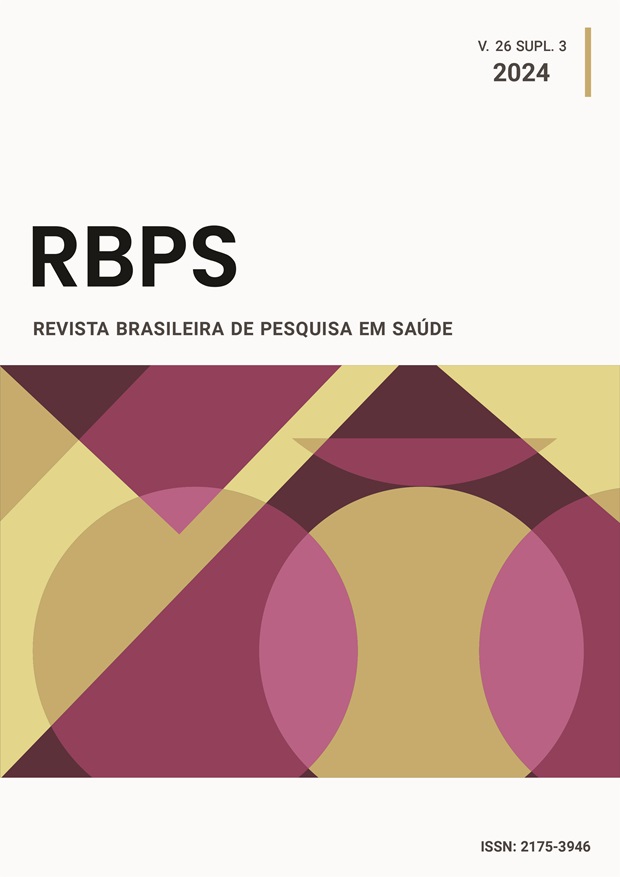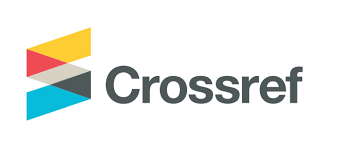Reproductive success in a female patient diagnosed with hypogonadotropic hypogonadism after in vitro fertilization
case report
DOI:
https://doi.org/10.47456/rbps.v26isupl_3.11Keywords:
Congenital hypogonadotropic hypogonadism, Assisted reproductive techniques, Fertility, Ovarian reserveAbstract
Introduction: Congenital hypogonadotropic hypogonadism (HHC) is a rare genetic condition, characterized by low levels of gonadotropins and sex steroids in the absence of anatomical and functional abnormalities of the hypothalamic-pituitary-gonadal axis, its incidence is approximately 1:10,000 – 1: 8,6000 and the male to female ratio is 3.6:1. Hormone replacement can be used in patients without reproductive desire, aiming at the emergence of secondary sexual characteristics, and in the presence of reproductive desire, the objective is ovulation and sperm production. Objective: Given its extremely low incidence, good evidence relevant to several aspects for reproductive medicine in HHC is weak. That said, this case report is intended to enrich the bibliography on the subject and add to the scientific community. Case report: Patient, 40 years old, nulligest, diagnosed with HHC sought medical care due to reproductive desire, the couple initially made attempts in 2018, without success, and carried out a new search for the procedure in 2021, when she underwent new ovarian stimulation, follicular aspiration and fertilization, obtaining five embryos, subjected to pre-implantation genetic analysis, selecting euploids for transfer. Two embryos were then transferred, with successful implantation and one of them evolving into a healthy newborn. Conclusion: In addition to the discrepant incidence between genders, making the diagnosis of HHC even rarer in females, the moment of diagnosis in these cases may occur later. Low-complexity reproductive techniques can be offered, but a significant proportion of these patients will need assisted reproduction techniques.
Downloads
References
1. Fraietta R, Zylberstejn DS, Esteves SC. Hypogonadotropic hypogonadism revisited. Clinics (Sao Paulo). 2013;68 Suppl 1(Suppl 1):81-8. doi: 10.6061/clinics/2013(sup01)09. PMID: 23503957; PMCID: PMC3583156.
2. Raivio T, Miettinen PJ. Constitutional delay of puberty versus congenital hypogonadotropic hypogonadism: Genetics, management and updates. Best Pract Res Clin Endocrinol Metab. 2019 Jun;33(3):101316. doi: 10.1016/j.beem.2019.101316. Epub 2019 Sep 5. PMID: 31522908.
3. Parent AS, Teilmann G, Juul A, Skakkebaek NE, Toppari J, Bourguignon JP. The timing of normal puberty and the age limits of sexual precocity: variations around the world, secular trends, and changes after migration. Endocr Rev. 2003 Oct;24(5):668-93. doi: 10.1210/er.2002-0019. PMID: 14570750.
4. Layman LC. Hypogonadotropic hypogonadism. Endocrinol Metab Clin North Am. 2007 Jun;36(2):283-96. doi: 10.1016/j.ecl.2007.03.010. PMID: 17543719.
5. Young J, Xu C, Papadakis GE, Acierno JS, Maione L, Hietamäki J, Raivio T, Pitteloud N. Clinical Management of Congenital Hypogonadotropic Hypogonadism. Endocr Rev. 2019 Apr 1;40(2):669-710. doi: 10.1210/er.2018-00116. PMID: 30698671. Dzemaili S, Tiemensma J, Quinton R, Pitteloud N, Morin D, Dwyer AA. Beyond hormone replacement: quality of life in women with congenital hypogonadotropic hypogonadism. Endocr Connect. 2017;6(6):404–12.
6. Shaw ND, Seminara SB, Welt CK, Au MG, Plummer L, Hughes VA, Dwyer AA, Martin KA, Quinton R, Mericq V, Merino PM, Gusella JF, Crowley WF Jr, Pitteloud N, Hall JE. Expanding the phenotype and genotype of female GnRH deficiency. J Clin Endocrinol Metab. 2011 Mar;96(3):E566-76. doi: 10.1210/jc.2010-2292. Epub 2011 Jan 5. PMID: 21209029; PMCID: PMC3047229.
7. Gao Y, Yu B, Mao J, Wang X, Nie M, Wu X. Assisted reproductive techniques with congenital hypogonadotropic hypogonadism patients: a systematic review and meta-analysis. BMC Endocr Disord. 2018 Nov 19;18(1):85. doi: 10.1186/s12902-018-0313-8. PMID: 30453944; PMCID: PMC6245556.
8. Yilmaz S, Ozgu-Erdinc AS, Yumusak O, Kahyaoglu S, Seckin B, Yilmaz N. The reproductive outcome of women with hypogonadotropic hypogonadism undergoing in vitro fertilization. Syst Biol Reprod Med. 2015;61(4):228-32. doi: 10.3109/19396368.2015.1037936. Epub 2015 Jun 4. PMID: 26042899.
9. Cecchino GN, Canillas GM, Cruz M, García-Velasco JA. Impact of hypogonadotropic hypogonadism on ovarian reserve and response. J Assist Reprod Genet. 2019 Nov;36(11):2379-2384. doi: 10.1007/s10815-019-01587-7. Epub 2019 Oct 18. PMID: 31625035; PMCID: PMC6885483.
10. Brioude F, Bouligand J, Trabado S, Francou B, Salenave S, Kamenicky P, Brailly-Tabard S, Chanson P, Guiochon-Mantel A, Young J. Non-syndromic congenital hypogonadotropic hypogonadism: clinical presentation and genotype-phenotype relationships. Eur J Endocrinol. 2010 May;162(5):835-51. doi: 10.1530/EJE-10-0083. Epub 2010 Mar 5. PMID: 20207726.
11. Dzemaili S, Tiemensma J, Quinton R, Pitteloud N, Morin D, Dwyer AA. Beyond hormone replacement: quality of life in women with congenital hypogonadotropic hypogonadism. Endocr Connect. 2017 Aug;6(6):404-412. doi: 10.1530/EC-17-0095. Epub 2017 Jul 11. PMID: 28698240; PMCID: PMC5551425.
12. Tal R, Seifer DB. Ovarian reserve testing: a user's guide. Am J Obstet Gynecol. 2017 Aug;217(2):129-140. doi: 10.1016/j.ajog.2017.02.027. Epub 2017 Feb 21. PMID: 28235465.
Downloads
Published
How to Cite
Issue
Section
License
Copyright (c) 2025 Brazilian Journal of Health Research

This work is licensed under a Creative Commons Attribution-NonCommercial-NoDerivatives 4.0 International License.
Authors and reviewers must disclose any financial, professional, or personal conflicts of interest that could influence the results or interpretations of the work. This information will be treated confidentially and disclosed only as necessary to ensure transparency and impartiality in the publication process.
Copyright
RBPS adheres to the CC-BY-NC 4.0 license, meaning authors retain copyright of their work submitted to the journal.
- Originality Declaration: Authors must declare that their submission is original, has not been previously published, and is not under review elsewhere.
- Publication Rights: Upon submission, authors grant RBPS the exclusive right of first publication, subject to peer review.
- Additional Agreements: Authors may enter into non-exclusive agreements for the distribution of the RBPS-published version (e.g., in institutional repositories or as book chapters), provided the original authorship and publication by RBPS are acknowledged.
Authors are encouraged to share their work online (e.g., institutional repositories or personal websites) after initial publication in RBPS, with appropriate citation of authorship and original publication.
Under the CC-BY-NC 4.0 license, readers have the rights to:
- Share: Copy and redistribute the material in any medium or format.
- Adapt: Remix, transform, and build upon the material.
These rights cannot be revoked, provided the following terms are met:
- Attribution: Proper credit must be given, a link to the license provided, and any changes clearly indicated.
- Non-Commercial: The material cannot be used for commercial purposes.
- No Additional Restrictions: No legal or technological measures may be applied to restrict others from doing anything the license permits.

























